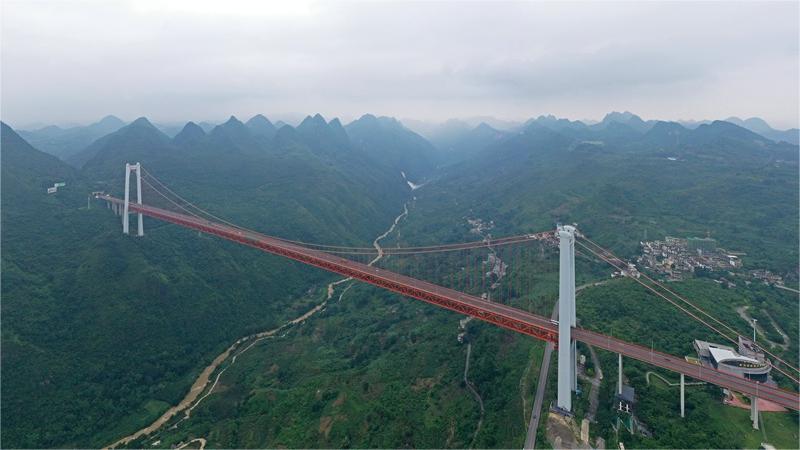U.S. ports raise objections to tariff on Chinese cranes
LOS ANGELES, July 4 (Xinhua) -- A new tariff on Chinese-made port cranes is facing strong opposition from U.S. port authorities and terminal operators, who warn of the unintended consequences of reduced port efficiency, higher consumer prices and a weaker national economy.
The tariff rate on Chinese-made ship-to-shore (STS) cranes would increase from zero to 25 percent starting on Aug. 1 to "protect U.S. manufacturers," according to a White House announcement in May.
The country's ports and marine terminals have weighed in over the past week, urging the U.S. Trade Representative (USTR) to withdraw or delay imposing the tariff, Loadstar and the Maritime Executive, local news outlets focusing on the supply chain and port industry, reported Wednesday.
"Simply put, AAPA (American Association of Port Authorities) is confident that the tariff, if imposed, will not meet its stated objectives. Instead, it will only result in negative outcomes, including grave harm to port efficiency and capacity, strained supply chains, increased consumer prices, and a weaker U.S. economy," said Cary Davis, president and chief executive officer of the AAPA, in a letter to the USTR last Friday.
STS cranes are used for loading and unloading containers between container ships and ports and are considered critical to port productivity.
Based on AAPA's estimate, the ports that have signed contracts with Chinese crane manufacturers are now faced with at least 131.25 million U.S. dollars in unexpected costs due to the new tariff.
According to the association, at least 35 STS cranes are already on order across the country, and an STS crane costs 15 million dollars on average. The association added that another 61 cranes are expected to be ordered in the next five years.
For example, the AAPA disclosed in the letter that the Port of New Orleans anticipated a 52-million-dollar cost increase for its planned Louisiana International Terminal expansion due to the tariff; the Port of Virginia, which has already contracted for 12 cranes, faced an additional 40.38 million dollars in costs.
"The ports that have already signed contracts are forced to simply absorb millions of dollars in new costs, which may require them to reduce the scope of other projects, take on debt, or delay necessary infrastructure upgrades," said the AAPA.
The association's concerns were echoed in public comments submitted to the USTR from various port authorities, terminal operators and industry stakeholders. Many argued that the tariff would not achieve its intended goal.
STS cranes are among a wide range of Chinese products subject to a 25 percent tariff increase, including steel and aluminum, solar cells and electric vehicles, with the stated goal of "rebuilding the United States' industrial capacity."
"There are currently no manufacturers of STS cranes in the United States, nor has there been for nearly four decades," said a joint letter signed by 15 ports or organizations to the USTR last Friday.
"It is unlikely any manufacturers would be able to produce American-made STS cranes within the next several years with the reliability and durability required to support our seaports," it continued.
Additionally, the two other countries producing "a small fraction of STS cranes" are Germany and Finland, but they source most of their components from China, making their products subject to the tariff as well, according to the joint letter.
The ports warned that increased costs would force them to cut back on other projects, take on debt, or delay essential infrastructure upgrades, leading to reduced efficiency, longer wait times for ships, and ultimately, higher prices for consumers.
The tariff's unintended consequences could ripple through the U.S. economy, said opponents, as inefficient port infrastructure could cause supply chain problems for U.S. manufacturers, retailers and farmers.
They warned that such a tariff also threatens to make U.S. ports less competitive compared to those in Mexico and Canada, further exacerbating supply chain disruptions and potentially driving business away from U.S. shores.
Furthermore, critics argued the tariff would be "a step backwards" from the government's commitment to modernizing and improving U.S. infrastructure through the Bipartisan Infrastructure Law.
They added that by hindering ports' ability to meet growing cargo demand and driving up global prices for cranes, the tariff could negatively impact all U.S. ports.
Photos
Related Stories
- Feature: From Fujian to Washington D.C.: The cross-border melodic union
- "Bond with Kuliang" brings together Chinese, American youths to explore new opportunities, forge new connections
- People act as key links in Sino-US relationship
- FedEx launches two new cargo flights between China, U.S.
- China urges U.S. to promote stability in bilateral relations, not the opposite
Copyright © 2024 People's Daily Online. All Rights Reserved.









